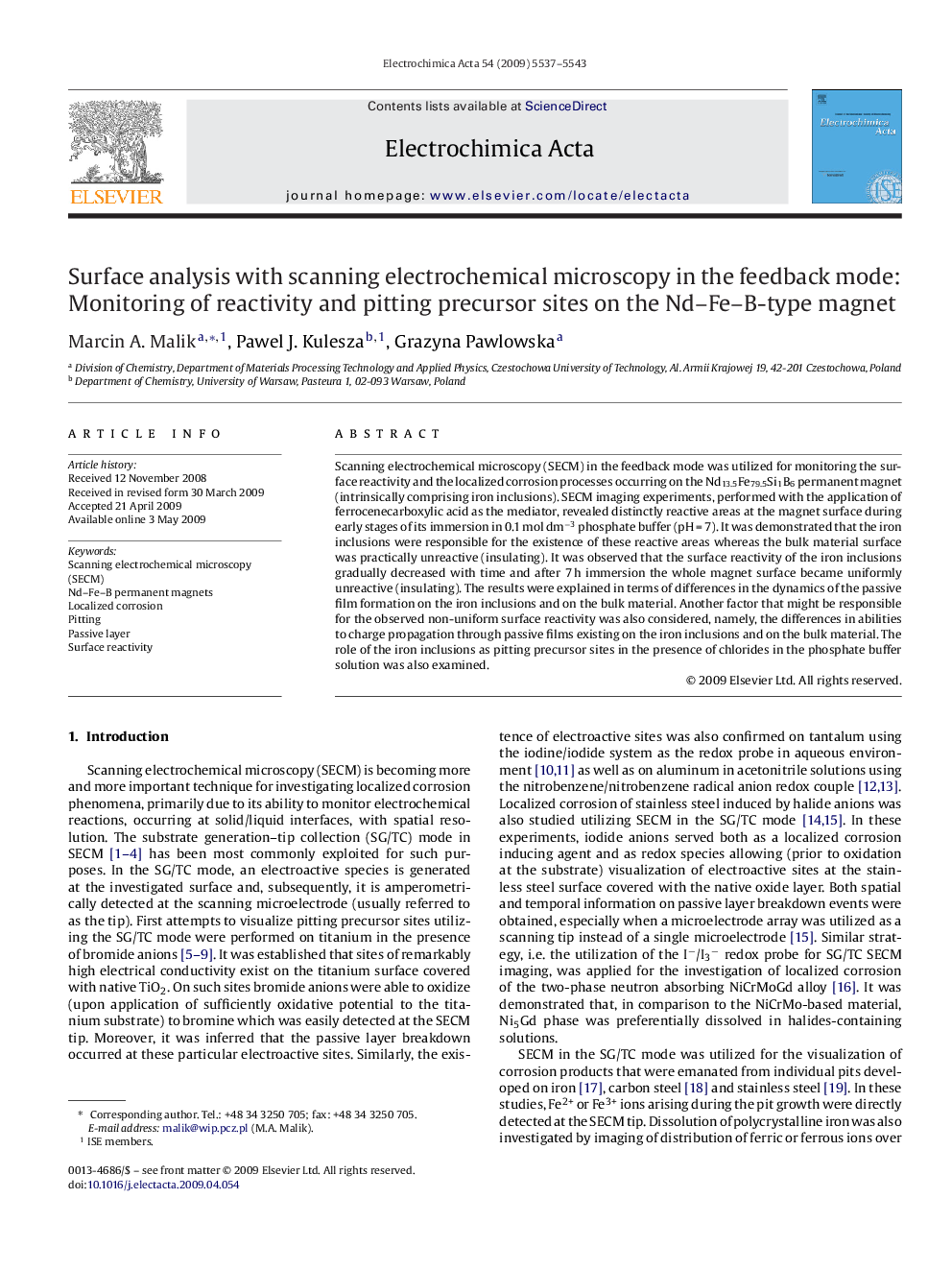| Article ID | Journal | Published Year | Pages | File Type |
|---|---|---|---|---|
| 191832 | Electrochimica Acta | 2009 | 7 Pages |
Scanning electrochemical microscopy (SECM) in the feedback mode was utilized for monitoring the surface reactivity and the localized corrosion processes occurring on the Nd13.5Fe79.5Si1B6 permanent magnet (intrinsically comprising iron inclusions). SECM imaging experiments, performed with the application of ferrocenecarboxylic acid as the mediator, revealed distinctly reactive areas at the magnet surface during early stages of its immersion in 0.1 mol dm−3 phosphate buffer (pH = 7). It was demonstrated that the iron inclusions were responsible for the existence of these reactive areas whereas the bulk material surface was practically unreactive (insulating). It was observed that the surface reactivity of the iron inclusions gradually decreased with time and after 7 h immersion the whole magnet surface became uniformly unreactive (insulating). The results were explained in terms of differences in the dynamics of the passive film formation on the iron inclusions and on the bulk material. Another factor that might be responsible for the observed non-uniform surface reactivity was also considered, namely, the differences in abilities to charge propagation through passive films existing on the iron inclusions and on the bulk material. The role of the iron inclusions as pitting precursor sites in the presence of chlorides in the phosphate buffer solution was also examined.
